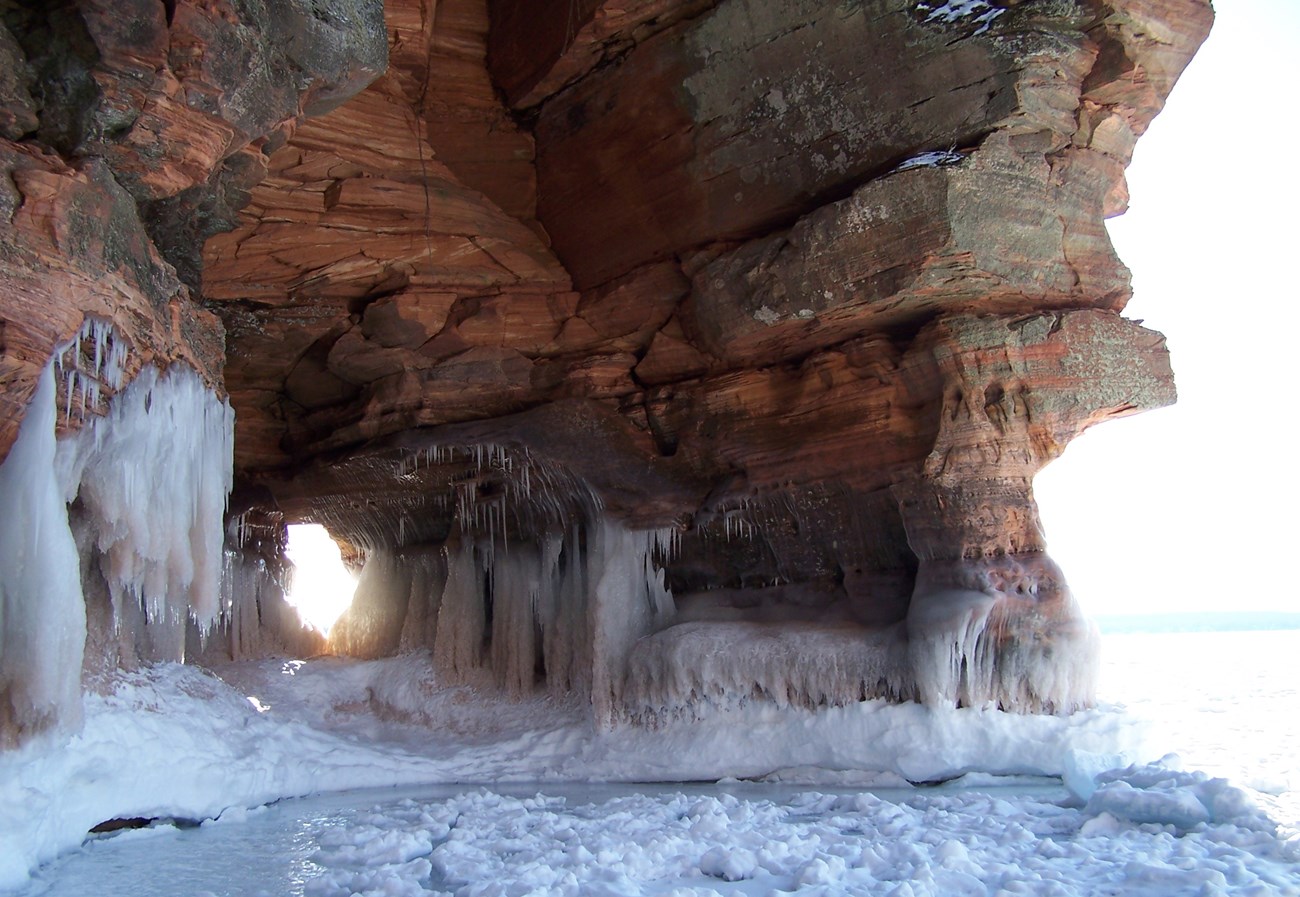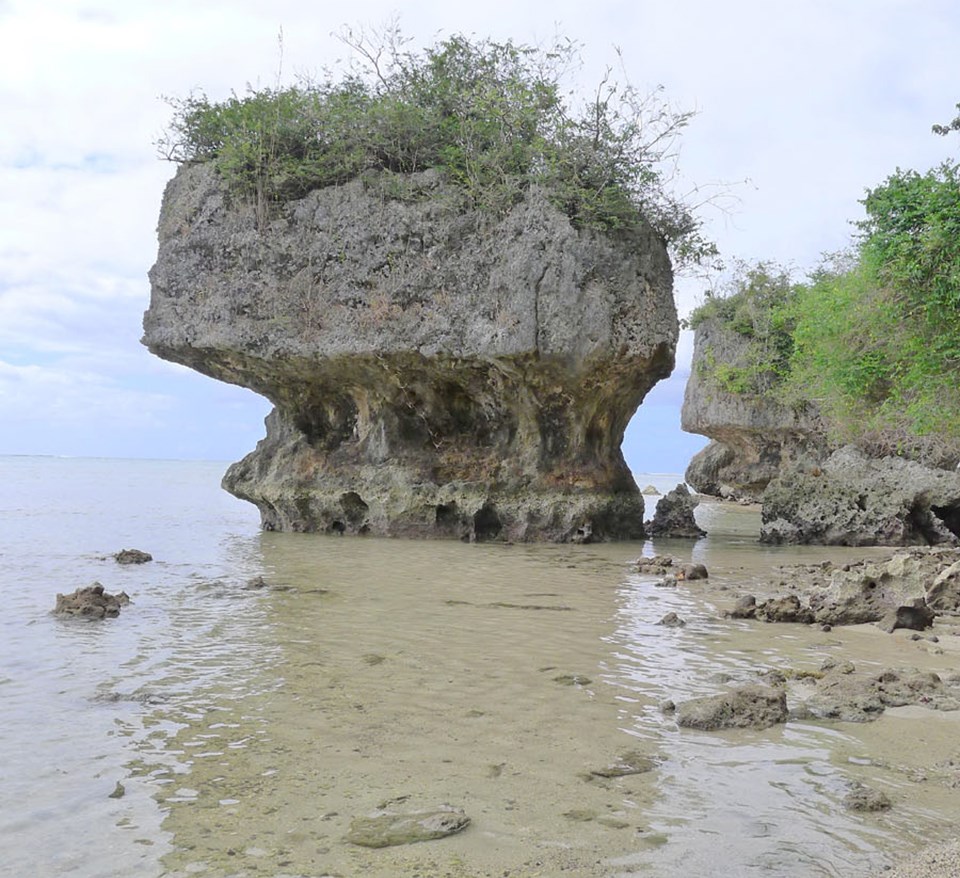Part of a series of articles titled Coastal Processes.
Previous: Coastal Processes—Near-Shore Currents
Article

NPS photo.
A shore zone may be subject to the same range of physical and chemical weathering processes that occur on land, but the presence of seawater and the cycle of wetting and drying produced by tides introduces additional significant factors. The tidal cycle of wetting and drying is instrumental in a variety of weathering processes. The zone affected extends from low water mark to the furthest limit reached by waves and spray at high tide. Its areal extent is therefore controlled largely by tidal range, but tidal type and meteorological factors are also important because these affect, respectively, the time available for drying between tides and the rate of evaporation. The most aggressive regime for shoreline weathering probably occurs along coasts characterized by high evaporation rates and mixed or diurnal tides (Summerfield 1991).

NPS photo.
An important process in shoreline weathering is salt weathering, although the effectiveness depends on the ability of shoreline rocks to absorb seawater and spray. Chemical weathering also plays a role: the nature of the chemical reactions being controlled by rock mineralogy, and their rate being influenced by temperature and variations in micro-environmental factors such as organic activity and pH along the shore. Solution is also a significant process on limestone and calcium carbonate-cemented rocks like those found at War in the Pacific National Historical Park, Guam.
In high latitudes frost weathering is a potentially significant shoreline weathering process because of the frequency of wetting of bare rock surfaces in the intertidal zone. Seawater alone is not very effective because, upon freezing, the salts it contains become segregated and produce a rather soft ice incapable of transmitting high stresses to rocks. Frost weathering is apparently more effective where freshwater is available from melting snow banks, permafrost, or lakeshores such as in Apostle Islands National Lakeshore, Wisconsin (Summerfield 1991).
Part of a series of articles titled Coastal Processes.
Previous: Coastal Processes—Near-Shore Currents
Last updated: March 8, 2019